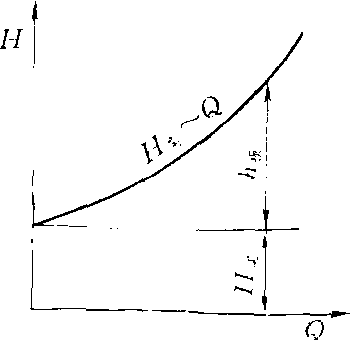水泵管路特性曲线pipeline characteristic curve of pump
又称需要扬程曲线。需要水泵做功的扬程与出水流量的关系曲线。是水泵提升的净扬程曲线(纵坐标为进、出水池水位差H净的一条直线)与管路阻力曲线(管路水头损失h损与流量Q的关系曲线)的叠加线。以H需~Q表示。该曲线表明泵站需要提升的扬程随设计流量、进、出水池的水位差和管路水头损失而变化,是确定水泵工作点必不可少的条件。

水泵管路特性曲线图
| 词条 | 水泵管路特性曲线 |
| 类别 | 中文百科知识 |
| 释义 | 水泵管路特性曲线pipeline characteristic curve of pump又称需要扬程曲线。需要水泵做功的扬程与出水流量的关系曲线。是水泵提升的净扬程曲线(纵坐标为进、出水池水位差H净的一条直线)与管路阻力曲线(管路水头损失h损与流量Q的关系曲线)的叠加线。以H需~Q表示。该曲线表明泵站需要提升的扬程随设计流量、进、出水池的水位差和管路水头损失而变化,是确定水泵工作点必不可少的条件。
水泵管路特性曲线图 |
| 随便看 |
开放百科全书收录579518条英语、德语、日语等多语种百科知识,基本涵盖了大多数领域的百科知识,是一部内容自由、开放的电子版国际百科全书。